It shouldn’t come as a surprise that the internet is constantly evolving, changing, and updating, just like all other aspects of technology. A lot has changed in terms of navigating this new environment, advertising, and marketing new goods and services. Some of the core components of Web 2.0 PR are present in Web3 PR, but it diverges at certain points to reframe the strategies you’ll need.
An exciting new version of the internet known as Web3 has arrived, and with it, a whole new set of challenges for the field of public relations. It can be challenging to know where to start with evolving strategies, cutting-edge technologies, and alternative channels to target. We’ve got you covered, so don’t worry.
Describe Web3:
The third generation of the internet—also referred to as Web3.0 or Web3—follows web 1.0 and web 2.0. Although Web3 has not yet been as thoroughly incorporated into society as Web 2.0, the rapid development of blockchain technology is stirring up the tech scene.
The internet has a few essential traits that are present in every iteration. While each iteration is supported by a newer technology, with blockchain serving as the Web3’s information infrastructure, they can be distinguished more easily by the characteristics they exhibit rather than any specific technological advancement. Today, The Web3 community has recently shown an interest in development of web3 development services to fulfill the demand of cryptocurrency owners. With rising demand many web3 development firms provide services for web3 game development also.
Several Web Iterations:
Let’s break down each iteration, for instance, by describing the rationale and prevailing notions that underlie each one of them.
About Web 1 :- Web 1.0 was the initial version of the internet and offered services that allowed users to read content online. This frequently included single-page websites and read-only sources, and it operated by providing users with specific pieces of information they were looking for.
About Web 2 :- Fostering connectivity and collaboration, Web 2 focuses on giving users access to online services. Prime web 2 websites, for instance, are those that emphasize user-generated content that they do not own. Web 2.0 is distinguished by a culture that values participation and sharing over ownership. Big technology companies all over the world have actively used Web 2.0 capabilities.
About Web3 :- which is focused on offering users person-to-person services, is built on blockchain technology and artificial intelligence. Web 3 promotes independence and ensures that everyone owns the content they use and interact with rather than relying on middlemen businesses, banks, or organizations.
What is Web3 PR, and How Significant is it for Web3 Businesses?
Web3 public relations refers to any public relations initiatives carried out on behalf of a Web3 business or that use Web3 tools to raise awareness. A new Web3 business launching Web3 PR campaigns to ensure that people are aware of what their product does and why it is significant would be an example of the former.
The key difference between projects that gain traction, funding, and followers and those that fizzle out into nothing is effective Web3 PR campaigns. Strong campaigns can take on a variety of styles, particularly as we move into this newly developed area of public relations.
The User is the Focus of the Web:
Web users can choose which applications they interact with when sharing their data in a Web3 environment where they own their data. Participants can use this system to show how they interacted with one another. If a college gives you a Decentralized Identifier (DID), for example, you can later prove that you were enrolled at that college without having to contact it again.
In cases where participants consent to rely on a blockchain as a source of trust, Decentralized Identities can also act as a placeholder for a public profile. This is what initiatives like ENS or Unlock seek to offer: a means of online identity verification based on your ownership of a public key.
What is Our Next Step?
The journey to a new web is exhausting but thrilling. The infrastructure that has been built over the last 20 years is truly incredible. Today, 4.6 billion people use the Internet and the web in their daily lives. The top 35 websites received more visitors than all other websites at the same time . Users are even more dependent on a small number of players and have less control over their data.
Early Web content was static. Then, at the expense of centralization, Web 2.0 arrived to offer interactivity and services we use every day. This is something that the Web3 trend aims to change. Users of the web can participate thanks to distributed networks built on open protocols.


Comments are closed.